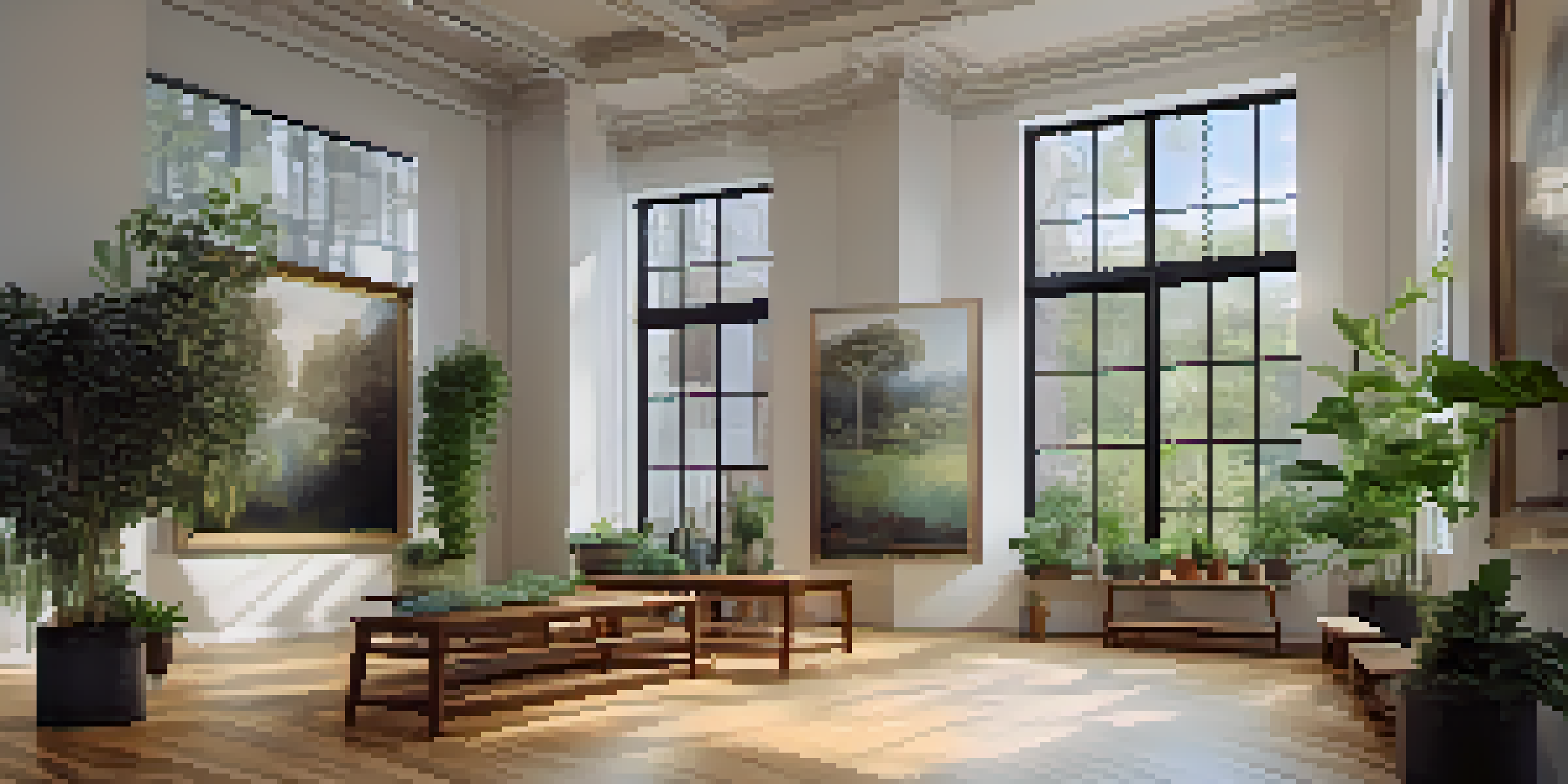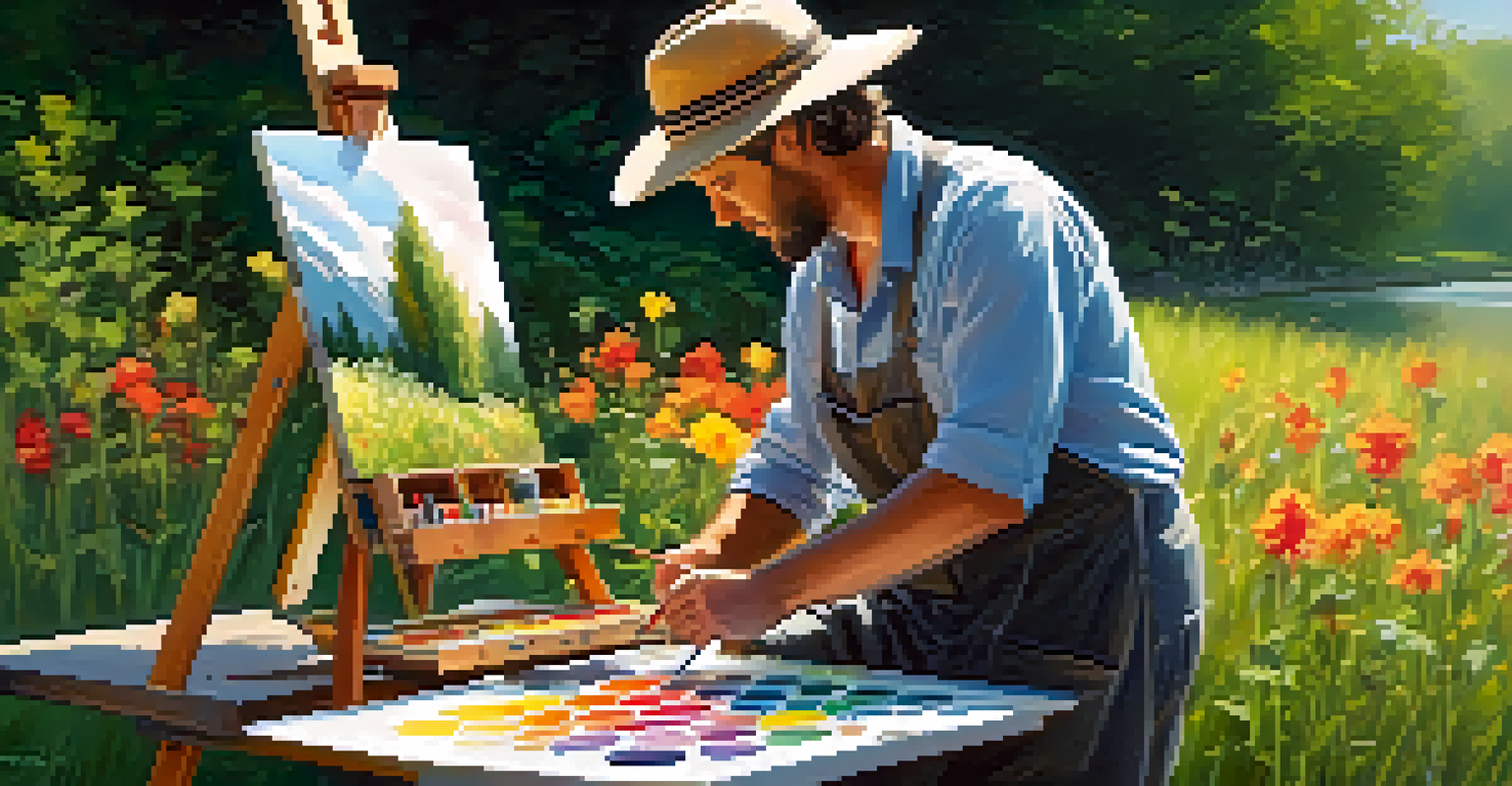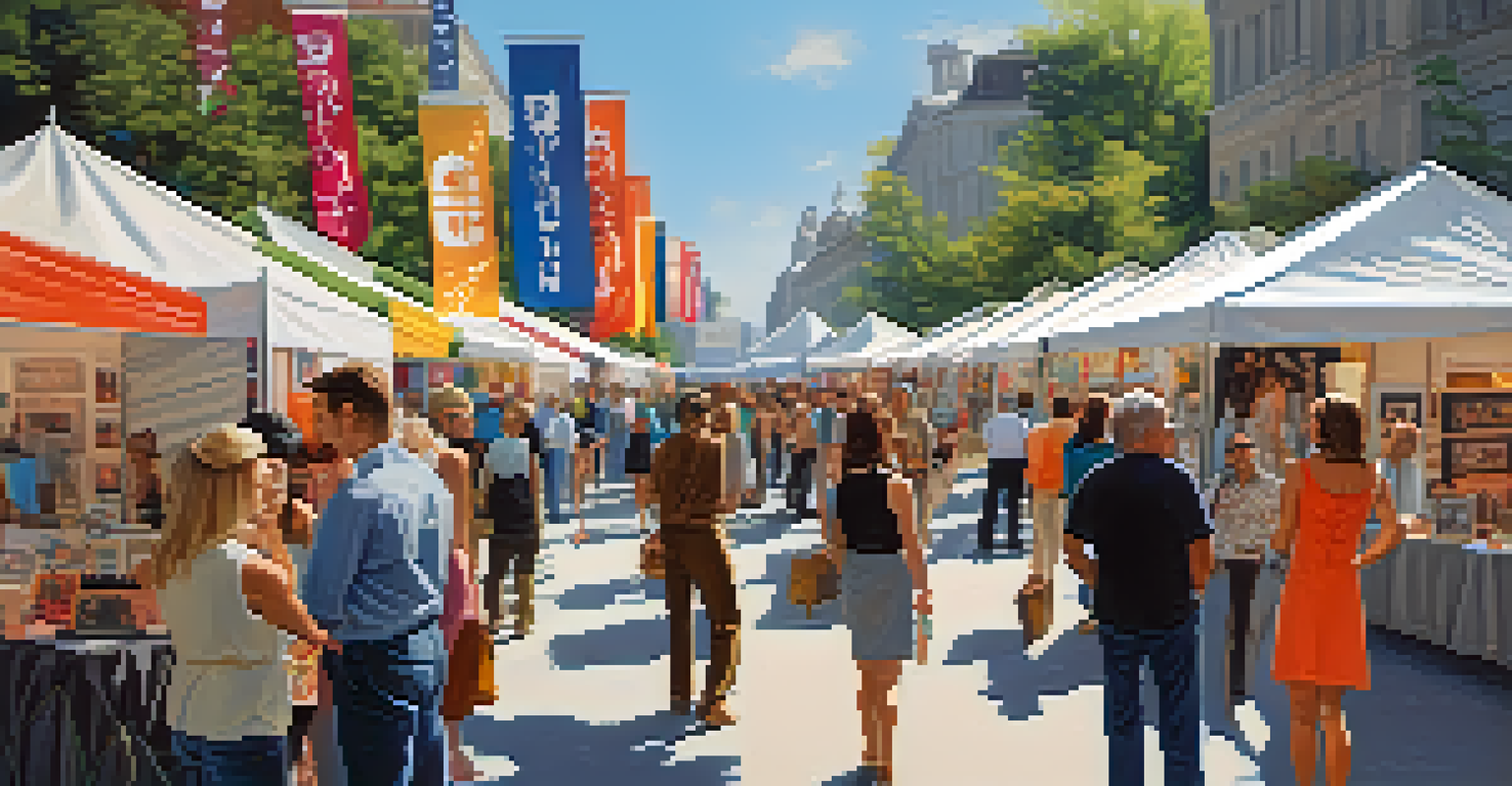The Psychology of Buying Art: Emotional vs. Investment Value

Understanding the Emotional Connection to Art
Art often resonates with us on a deeply personal level. It can evoke memories, feelings, or even aspirations, making it more than just a physical object. This emotional connection is a significant driver behind why people choose to buy art, as it brings joy, comfort, or inspiration into their lives.
Art is not freedom from discipline, but disciplined freedom.
When someone gazes at a painting and feels a rush of nostalgia or finds solace in its colors, that’s the heart speaking. This phenomenon illustrates how art can become a part of one's identity or a reflection of personal experiences. Such emotional ties can sometimes outweigh the monetary value of the piece.
For many, acquiring art is not just about investment; it's about creating a space that feels authentic and alive. This emotional aspect can lead to a more fulfilling purchasing experience, where the buyer feels connected to the piece, enhancing their overall enjoyment.
The Rise of Art as an Investment
In recent years, art has increasingly been viewed through the lens of investment. Collectors and investors alike recognize that certain pieces can appreciate in value, sometimes significantly. This shift has led to a new demographic of buyers who prioritize future financial returns over emotional satisfaction.

Art fairs and galleries now often showcase works with a clear investment potential, enticing buyers with the promise of profitability. However, this trend can complicate the simple act of buying art, as it introduces a level of strategy and market awareness that the average art lover may not possess.
Art's Emotional Connection Matters
The emotional ties people have with art often drive their purchasing decisions, making the experience deeply personal.
While the allure of making a profitable investment is strong, it’s essential to remember that the art market can be unpredictable. What begins as a tangible asset can quickly turn into a gamble, making it crucial for buyers to balance emotional fulfillment with investment considerations.
Balancing Emotional and Financial Factors in Art Buying
Finding the sweet spot between emotional and investment value can be challenging. Buyers often grapple with the question: should I buy what I love, or what will hold its value? This internal debate can lead to confusion and frustration, especially for new art buyers.
The best artist has no conception that a marble block does not contain within it; it is the artist's vision that brings it to life.
One way to navigate this balance is to establish a personal criteria list before making a purchase. This could include factors like emotional resonance, artist reputation, and market trends. By being clear about what you want, you can make more informed decisions that satisfy both your heart and your wallet.
Moreover, engaging with art communities or seeking advice from art consultants can provide valuable insights. These resources can guide you in making choices that not only feel good but also have the potential for financial growth, creating a more rewarding buying experience.
The Role of Art Galleries and Dealers in Buyer Psychology
Art galleries and dealers play a significant role in shaping buyer perceptions and decisions. They often curate collections that appeal to both emotional and financial sensibilities, helping potential buyers navigate the complexities of the art market. Their expertise can influence how art is valued and perceived.
For instance, a gallery might emphasize the emotional narrative behind a piece while simultaneously highlighting its investment potential. This dual approach can effectively engage buyers, making them feel both connected to the art and aware of its market significance.
Investing in Art is Growing Popular
Many buyers now view art as an investment, seeking pieces that offer potential financial returns alongside emotional satisfaction.
Additionally, galleries often host events and exhibitions that enhance the emotional experience of purchasing art. These gatherings create a community atmosphere, allowing buyers to connect with artists and other collectors, further deepening their emotional investment.
Art Fairs: Where Emotion Meets Investment
Art fairs serve as a vibrant meeting ground for both emotional and investment-driven buyers. These events showcase a diverse range of artworks, providing opportunities for collectors to discover pieces that resonate with them personally while also considering their investment potential. The dynamic atmosphere encourages exploration and connection.
During art fairs, buyers can engage directly with artists and galleries, allowing for deeper conversations about the art's significance and value. This interaction can enhance the emotional experience, as buyers learn the stories and intentions behind each piece.
However, the competitive environment of art fairs can also amplify the investment aspect. Buyers may feel pressured to make quick decisions, balancing their emotional instincts with the fear of missing out on a potentially valuable acquisition.
The Importance of Personal Taste in Art Purchases
Personal taste plays a crucial role in the art-buying process. What resonates with one person may not hold the same appeal for another, making art a uniquely subjective experience. This individuality is what makes the art market so diverse, with a wide range of styles, mediums, and artists to choose from.
When buyers prioritize their personal taste, they tend to invest in art that truly speaks to them. This emotional connection can bring joy and satisfaction that lasts far beyond the initial purchase, turning a simple transaction into a meaningful addition to their lives.
Balancing Taste and Market Trends
Successful art buyers navigate the delicate balance between personal taste and market dynamics to ensure fulfilling and potentially lucrative purchases.
However, it's essential for buyers to balance their tastes with market trends if they are also considering investment value. While personal preferences should lead the way, understanding broader market dynamics can help ensure that their choices are not only personally fulfilling but also potentially lucrative.
The Future of Art Buying: Trends and Insights
As the art market continues to evolve, new trends are emerging that blend emotional and investment values. For instance, the rise of digital art and NFTs (non-fungible tokens) is reshaping how we view ownership and value in art. This shift presents both opportunities and challenges for buyers navigating this new landscape.
Moreover, a growing emphasis on diversity and representation in the art world is influencing buyer preferences. Many collectors are now seeking works from underrepresented artists, driven by both a desire for emotional connection and a commitment to social impact. This trend reflects a broader cultural shift towards inclusivity.

Looking ahead, technology will likely play a significant role in the art-buying process. Virtual galleries, augmented reality, and online marketplaces are making art more accessible, allowing buyers to explore and purchase art in ways that resonate with their emotional and financial goals.